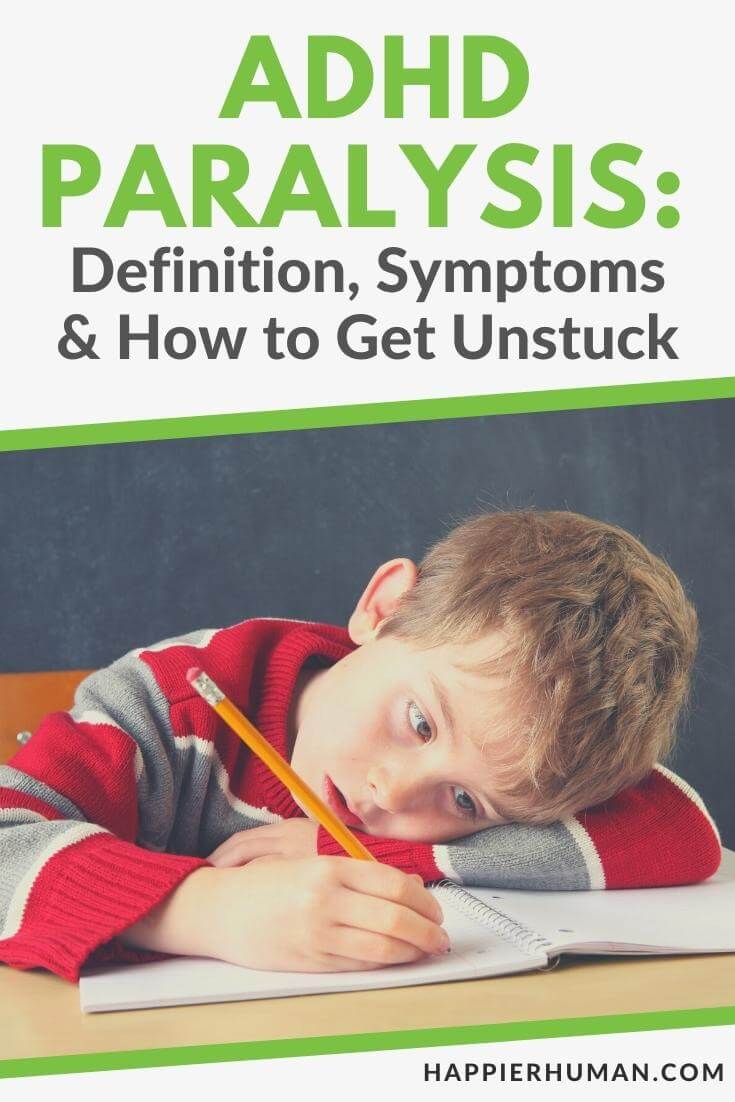There might be affiliate links on this page, which means we get a small commission of anything you buy. As an Amazon Associate we earn from qualifying purchases. Please do your own research before making any online purchase.
Let’s say you have five tasks on your to-do list.
You take a sip of coffee, look at each task, and after a couple of minutes, you already know how to start your day.
Even though you’re not fully aware of the process, during those couple of minutes, your mind does a detailed analysis to determine the optimal way to tackle your to-do list.
And once you finish your coffee, you get busy.
Now imagine those five tasks popping up in your head all at the same time. Each one seems just as important and urgent as the next one.
Suddenly, you find yourself paralyzed by indecision.
You spend half your day figuring out which task you should take on first and the other half ruminating over the fact that you wasted so much time deciding.
This is just one example of what people with ADHD paralysis experience constantly.
What is ADHD Paralysis?
Attention deficit hyperactivity disorder (ADHD) is a neurodevelopmental disorder characterized by restlessness, lack of focus, and impulsivity.
When we hear the word “ADHD”, we usually imagine that overly excited kid who can’t stop talking, climbs everywhere, breaks all the rules, and seems almost immune to any form of discipline (either through reward or punishment).
Since society often labels children with ADHD as “spoiled” or “difficult,” they often go through psycho-emotional development without receiving any intervention or treatment.
Unfortunately, when they reach adulthood, they encounter new challenges like holding a stable job, taking care of household chores, and making important life decisions.
Because of impulsivity, concentration problems, and reduced emotional regulation, adults with ADHD often struggle with procrastination [1] and a form of mental ‘freeze’ called ADHD paralysis.
In essence, ADHD paralysis (or ADHD freeze) is a mental state in which you feel unable to:
In other words, you feel so overwhelmed by all the things you want to/have to do that you end up doing nothing.
I want you to remember that ADHD paralysis isn’t a diagnosis but an experience relatively common among people living with ADHD.
Depending on the context, ADHD paralysis occurs either because the task doesn’t seem appealing enough or because your mind is overwhelmed by a million ideas which seem too exciting or urgent to ignore.
As you can imagine, knowing you have all the reasons to work on a task but finding it impossible to start is extremely frustrating.
It’s like having an itch that you can’t scratch.
To gain a better perspective on ADHD paralysis, we must look at how this condition affects the brain and cognitive functions.
ADHD, Motivation, and Executive Function
Executive function is an umbrella term that describes a set of mental skills that work together to help people organize and regulate their behavior to achieve a goal.
In other words, these skills allow us to plan, focus our attention, follow instructions, and perform a particular task.
This amazingly complex process takes place in the frontal lobe.

Since ADHD is associated with impaired executive function [2], people with this condition often find it difficult to channel their energy and consistently work on tedious or frustrating tasks.
Furthermore, it’s tough for them to ignore something that captures their attention and resume what they were doing.
Another crucial element contributing to ADHD paralysis is dopamine, a neurotransmitter that acts as a reward for the brain.
Dopamine is why we remain engaged in activities that we find exciting and engaging. Sometimes, even the promise of reward is enough to keep us anchored in activities.
For ADHD brains, dopamine-increasing tasks are even more gratifying, which means people with ADHD are constantly (sometimes uncontrollably) looking for optimal stimulation.
That’s why it’s tough for them to stay motivated and work through the challenges and obstacles of a boring task.
For someone who doesn’t understand how ADHD works, all these deficits may look like laziness or lack of motivation. It’s hard to believe that one can feel paralyzed in the face of a decision or task.
But for people with this condition, ADHD paralysis is a reality that can affect their professional or academic performance.
What Are the Symptoms of ADHD Paralysis?
ADHD paralysis isn’t a condition but a phenomenon specific to people living with attention deficit hyperactivity disorder, so there’s no clear set of symptoms.
However, certain behaviors can indicate a person may be experiencing ADHD paralysis.
But before we get to that, I think it’s important to point out the main symptoms of ADHD, which are:
When faced with a decision they cannot make or a task they find boring or unimportant, people with ADHD may experience anxiety and mental paralysis.
Often, they will resort to avoidance or procrastination to get themselves ‘unstuck.’
In other words, they will switch to a more rewarding activity or delay a decision or task until the pressure motivates them enough to act.
Other instances in which people with this condition may experience ADHD paralysis are when they have too much on their plate.
The sense of overwhelm makes it almost impossible for them to prioritize tasks and approach the workload step-by-step.
Types of ADHD Paralysis
There are different forms of ADHD paralysis, depending on the situation:
Task Paralysis
Task paralysis occurs when a task feels boring, or you’re under the pressure of an ever-growing to-do list.
In other words, you can’t find a reason to do it and the idea that ‘you have to do it because…’ isn’t motivating enough to make you do it.
At the same time, when you’re living with ADHD, having too much on your plate can throw you into a mental ‘freeze.’
Choice Paralysis
When faced with several options, people with ADHD may have difficulty deciding which one to choose.
This usually happens either because you feel like you don’t have enough criteria to differentiate between options or because there are too many options to choose from.
Choice paralysis can also occur when you’re overwhelmed by too many options.
Mental Paralysis
Imagine planning your vacation while watching a movie, talking to someone, and listening to the radio.
How would you feel if you had to focus on all these activities simultaneously?
That’s what the mind of a person with ADHD sometimes looks like.
In other words, when dealing with an avalanche of converging thoughts and ideas, people with ADHD will experience a state of mental paralysis.
How to Get Unstuck from ADHD Paralysis
If you’re living with ADHD, it’s important to remember that your brain works slightly differently from other brains.
In other words, there’s a certain point when the challenges you may experience in your everyday life are out of your control.
However, plenty of tips and practices can help you arrange your daily tasks in a way that allows you to avoid feeling overwhelmed and ‘paralyzed’ by indecision or inaction.
1. Write down your tasks (and cross them off the list when completed)
If you have too much on your plate and risk dealing with task paralysis, the simplest thing you can do is write down your tasks.
That way, you free your mind and cultivate the mental clarity you need to pursue each task.
As soon as you complete a task, make sure to cross it off the list.
It’s a simple gesture through which you are symbolically letting go of an activity you completed.
Once it’s crossed off the list, there’s no reason to (mentally) hold on to it.
2. Stick to a plan (as best as you can)
Planning is an essential tool that allows you to conduct your day-to-day activities in an organized and productive manner.
If you’re living with ADHD, making a plan is easy, but sticking to it can prove quite challenging.
Not only that your brain is more susceptible to dopamine-inducing activities, but you’re also surrounded by so many distractions.
Even though you may feel like the odds are sometimes stacked against you, in terms of avoiding task paralysis, following a plan is much better than doing whichever task feels interesting at a given moment.
In other words, a plan is like an anchor that keeps you from drifting towards procrastination.
3. If it feels overwhelming, break it down
Sometimes, an activity may trigger ADHD paralysis simply because it looks or feels overwhelmingly complex.
It doesn’t mean you’re lazy, stupid, or ill-prepared for the work you must put in.
It means you must figure out how to break it down into smaller chunks.
Smaller pieces mean fewer chances of getting bored or distracted before you complete the activity.
4. Assign time intervals for each task
Living with ADHD makes it easy to get carried away by an interesting activity and forget about the other tasks on your to-do list.
When you realize that you’ve spent most of your day on one activity and only have a couple of hours to complete the rest of your tasks, panic sets in, which can lead to ADHD paralysis.
You can assign time intervals for each task on your to-do list to avoid such situations.
That way, you are less likely to get carried away and lose sight of the rest of the activities you have on the list.
5. Embrace completion and abandon perfectionism
We know that perfectionism is one of the biggest productivity killers.
Sometimes, the need to deliver impeccable results can be overwhelming to the point where you don’t deliver at all.
The fact that you can’t solve a problem or create something the way you believe it should be done can put you in a state of mental paralysis.

But just because you can’t deliver to your set standards doesn’t mean you should postpone or abandon the task.
A more practical approach would be to adopt flexible standards and focus on completion rather than perfection.
6. Get out of your head and reconnect with your body
One of the reasons why you may be experiencing ADHD paralysis is that your mind is running a million thoughts per second.
That’s why occasionally getting out of your head is an excellent way to ‘get unstuck.’
Focus on physical activities, maybe a team sport.
Anything that gets you out of your head and into your body.
Try some simple meditation techniques if you’re not into physically tiring activities or strenuous exercise routines.
7. Reward your efforts and… make it fun
The fact that you’ve managed to use different strategies and tips to keep up with your to-do list is an accomplishment.
And accomplishments deserve rewards, especially when a task might have been tedious.
Even household chores can be a ‘walk in the park’ if you find the proper techniques or ways to make them fun.
Final Thoughts on ADHD Paralysis
ADHD paralysis can be a real challenge for people living with this condition.
It’s easy to resort to avoidance and procrastination when you’re feeling overwhelmed or can’t find a good reason to focus on a task.
In time, these coping strategies will cause problems with productivity or poor academic performance, leading to low self-esteem and depression.
To avoid reaching a point where you’re ‘paralyzed’ by indecision or inaction, make sure to:
The more you stick to a solid routine, the less likely you are to deal with ADHD paralysis.
And even if you do feel stuck sometimes, don’t be too harsh on yourself.
References
| [1] | J. R. Ferrari and S. E. Sanders, “Procrastination Rates Among Adults With and Without AD/HD: A Pilot Study,” Counseling and Clinical Psychology Journal, vol. 3, no. 1, 2006. |
| [2] | T. E. Brown, “ADD/ADHD and impaired executive function in clinical practice,” Current Attention Disorders Reports, p. 37–41, 2009. |

Alexander Draghici is a licensed Clinical Psychologist, CBT practitioner, and content writer for various mental health websites. His work focuses mainly on strategies designed to help people manage and prevent two of the most common emotional problems – anxiety and depression.


